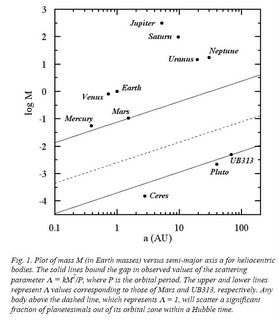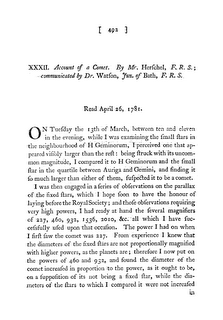Snakes on a Plane(t)


Some of my esteemed colleagues are in Prague at the IAU General Assembly debating what a planet is. To Pluto or not to Pluto, that is the question. Whether 'tis nobler to suffer the plucky underdog to stay in the club, or by opposing, kill our kids' favorite planet. A week ago, it appeared that Pluto would retain its title, and that Ceres, Charon, and 2003 UB313 would be late-season callups, with other hunks of ice and rock waiting in the wings. However, the home team is now staging a spirited rally. The upshot of the counterargument is that Pluto is too small to clear its "zone" of the Solar System.
I have some modest suggestions to break this logjam.
(1) Let Pluto remain the 9th planet, but give it an asterisk like Roger Maris' home run record. (Apparently Maris' record never had an asterisk, but never mind.)
(2) Call the planets known to the ancients (Mercury through Saturn, Earth excluded) "classical planets"; Uranus and Neptune "European planets", in honor of their discoverers Herschel, Le Verrier, and (maybe) Adams; and Pluto the "American planet" for Tombaugh. Any new ones can be "e-planets".
(3) Same as #2, except adopt the Star Trek planet classification.
(4) Punt until 2014 when the planet-dissolving dust cloud wipes out the Solar System.
